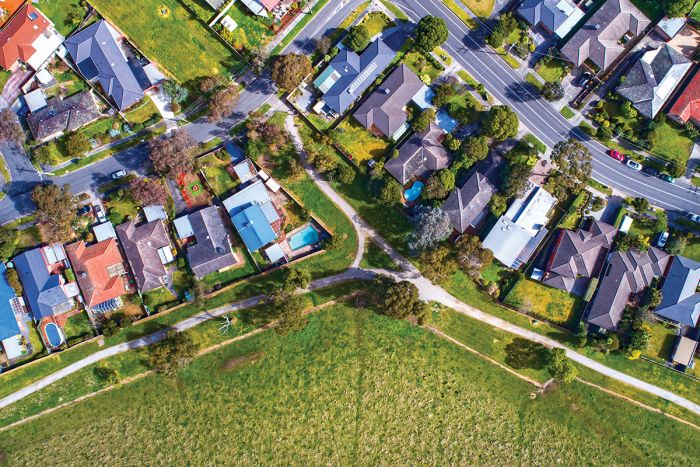
Low interest rates, government incentives and a strengthening economy have seen house prices rise at their fastest pace in almost 18 years and demand for homes loans at a record high.
Mortgage demand from first home buyers is running at the highest level since May 2009 when the then first home owner grant was tripled in response to the global financial crisis.
"Housing demand is running hot and is expected to continue doing so over the coming months in line with rising prices and turnover," BIS Oxford Economics economist Tim Hibbert said.
The CoreLogic national home value index released showed prices rose 2.1 per cent in February, the largest national rise since August 2003.
CoreLogic said housing values are rising across every capital city and state region, a synchronised growth phase that also hasn't been seen in Australia since the GFC.
Sydney and Melbourne were among the strongest markets in the month, rising 2.5 per cent and and 2.1 per cent respectively, as Australia's two largest cities caught up from weaker performances through 2020.
CoreLogic's research director Tim Lawless said both cities are still recording values below their earlier peaks and it is unclear whether this new found growth can be sustained.
"However, at this current rate of appreciation it won't be long before Australia's two most expensive capital city markets are moving through new record highs," he said.
"With household incomes expected to remain subdued and stimulus winding down, it is likely affordability will once again become a challenge in these cities."
Regional markets were 2.1 per cent up over February, remaining ahead of their capital cities counterparts, up two per cent.
Regional areas generally recorded less of a decline in housing values through the worst of the COVID period last year, while also showing an earlier and stronger growth trend through the second half of last year.
This regional preference is reflected in the annual growth rate, where the combined regionals index was 9.4 per cent higher while the combined capital city index is up by a much smaller 2.6 per cent.
Separate Australian Bureau of Statistics figures show new loan commitments rose to a record $28.8 billion in January, with mortgages for owner-occupiers 52.3 per cent higher than a year earlier.
Construction loans are also at a record, fuelled by the introduction of the federal government's HomeBuilder grant that was first introduced in June 2020.
Housing Industry Association economist Angela Lillicrap said the increase in lending coincides with a surge in new home sales to get the full benefit of the $25,000 HomeBuilder grant before it was reduced.
"Low interest rates, rising house prices, higher savings and a demographic shift in demand towards detached housing and regional areas should ensure ongoing demand for new homes into 2021," Ms Lillicrap said.
She also noted lending for renovations remain at elevated levels.
"Households have changed their spending habits in response to the COVID-19 interruptions," she said.
"Many have diverted funds that would have typically been spent on travel and entertainment into improving their homes."
CORELOGIC NATIONAL HOME VALUE INDEX FOR FEBRUARY
National - up 2.1 per cent
Sydney - up 2.5 per cent
Melbourne - up 2.1 per cent
Brisbane - up 1.5 per cent
Adelaide - up 0.8 per cent
Perth - up 1.5 per cent
Hobart - up 2.5 per cent
Darwin - up 0.7 per cent
Canberra - up 1.9 per cent
Combined capitals - up 2.0 per cent
Combined regional - up 2.1 per cent
-AAP
Photo credit: CoreLogic